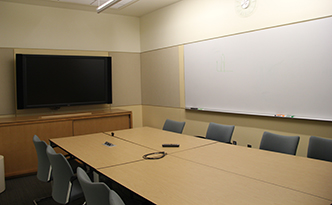Instructor Insights pages are part of the OCW Educator initiative, which seeks to enhance the value of OCW for educators.
Course Overview
This page focuses on the course 7.341 Of Mice and Men: Humanized Mice in Cancer Research as it was taught by Dr. Mandeep Kaur in Spring 2015.
This course introduces students to the latest developments in the fields of cancer biology and immunotherapy. Students explore the concepts of mouse models for human cancer, humanized cancer mice, and cancer immunotherapy by reading recent and classic research articles.
7.341 Of Mice and Men is one of many Advanced Undergraduate Seminars offered by the Biology Department at MIT. These seminars are tailored for students with an interest in using primary research literature to discuss and learn about current biological research in a highly interactive setting.
Course Outcomes
Course Goals for Students
The main objectives of this course are as follows: 1) to introduce students to the primary scientific literature and the process of reading research publications, and 2) to expose students to the emerging field of humanized mouse models in the development and testing of novel cancer therapies. Course objectives are met through class discussions and take-home/in-class assignments. By the end of the semester students should be able to:
- Read, comprehend, and critically evaluate the primary research literature
- Understand how to search for primary research articles relevant to the fields of humanized mice and cancer immunotherapy (PubMed, Google Scholar, MIT Library eJournals, etc.)
- Orally present papers from the primary scientific literature and engage in discussions
- Comprehend techniques used to develop various humanized mouse models
- Understand the relationship between cancer and the immune system, and the potential of cancer immunotherapy
- Understand how humanized mouse models or Mouse Avatars can be used to improve cancer chemotherapy regimens and develop new immunotherapies
I would advise instructors to introduce undergraduate students to primary research literature as early as possible in their educational programs.
— Mandeep Kaur
Below, Dr. Mandeep Kaur describes various aspects of how she taught 7.341 Of Mice and Men: Humanized Mice in Cancer Research.
Facilitating Productive Classroom Discussions
The most productive discussions occurred when students read the assigned material prior to class. To help facilitate a productive conversation, I also typically offered a brief introduction to the field and some background material at the beginning of class. We then delved into the papers, with each student presenting one figure.
Potential for Peer-Assessment
As noted in the syllabus, the mid-term assignment prompted students to write an abstract and title for a paper based on figures in a published manuscript (each of the Advanced Undergraduate Seminars asks students to complete this assignment). I thought each of the students in this iteration of the course completed the assignment well. In the future, I would like students to evaluate each other’s assignments (blinded) and compare them with the actual abstracts from the papers.
Primary Research Literature as a Teaching Tool
I would advise instructors to introduce undergraduate students to primary research literature as early as possible in their educational programs. This allows students to learn how to dissect papers and understand the science that is being taught to them from the perspective of the researchers who are performing these groundbreaking discoveries. Teaching students the scientific method and how we have come to understand various aspects about the different scientific disciplines from papers is more useful than lecturing about facts from a textbook.Curriculum Information
Prerequisites
7.03 Genetics, 7.05 General Biochemistry, 7.06 Cell Biology, or 7.28 Molecular Biology
Requirements Satisfied
None
Offered
Advanced Undergraduate Seminars are offered each semester and are topic-based.
Assessment
Grades are pass/fail, and are based on participation in discussion every week, satisfactory completion of the written and oral assignments, and attendance.
Student Information
Breakdown by Year
Sophomores, juniors, and seniors
Breakdown by Major
1/2 biology majors, 1/4 biological engineering majors, 1/4 computer science majors
During an average week, students were expected to spend 6 hours on the course, roughly divided as follows:
In Class
- Met 1 time per week for 2 hours per session; 13 sessions total; mandatory attendance.
- During each session, students discussed two papers from the primary research literature. Students were selected at random to present figures from the papers. In discussing the papers, emphasis was placed on evaluating the hypothesis, experimental design and interpretation of results.
- At the end of each session, the instructor briefly introduced the papers for the following week.
Out of Class
- Students were expected to read the assigned papers, to formulate one question per paper, and to send the questions by email to the instructor no later than the night before the class. These questions addressed different aspects of the papers and were discussed during class sessions.
- In addition, students completed a mid-term written assignment and prepared for their final oral assignment.
Semester Breakdown
| WEEK | M | T | W | Th | F |
|---|---|---|---|---|---|
| 1 |  |  |  |  |  |
| 2 |  |  |  |  |  |
| 3 |  |  |  |  |  |
| 4 |  |  |  |  |  |
| 5 |  |  |  |  |  |
| 6 |  |  |  |  |  |
| 7 |  |  |  |  |  |
| 8 |  |  |  |  |  |
| 9 |  |  |  |  |  |
| 10 |  |  |  |  |  |
| 11 |  |  |  |  |  |
| 12 |  |  |  |  |  |
| 13 |  |  |  |  |  |
| 14 |  |  |  |  |  |
| 15 |  |  |  |  |  |
| 16 |  |  |  |  |  |
 No classes throughout MIT
No classes throughout MIT Class meeting
Class meeting Lab visit
Lab visit No class session scheduled
No class session scheduled Oral presentations
Oral presentations Written assignment due
Written assignment due

 Room 1 of 1
Room 1 of 1 